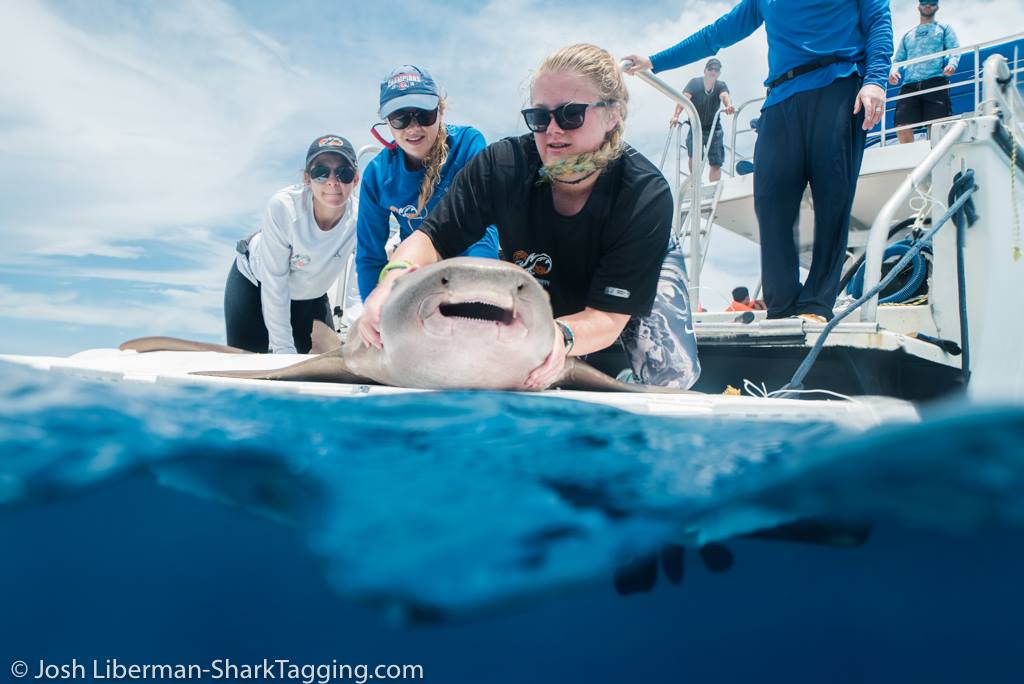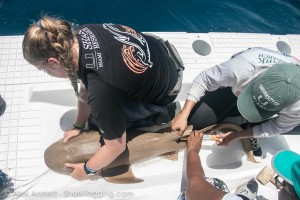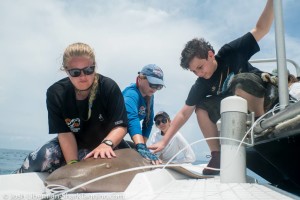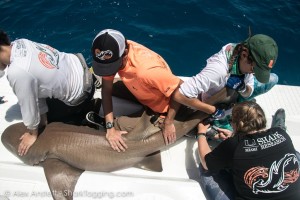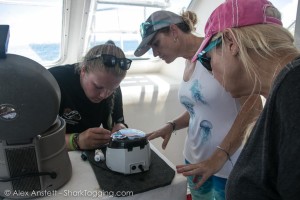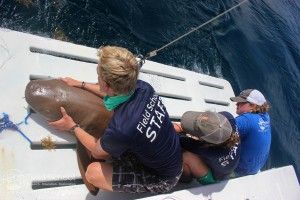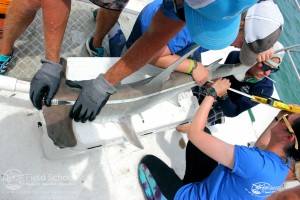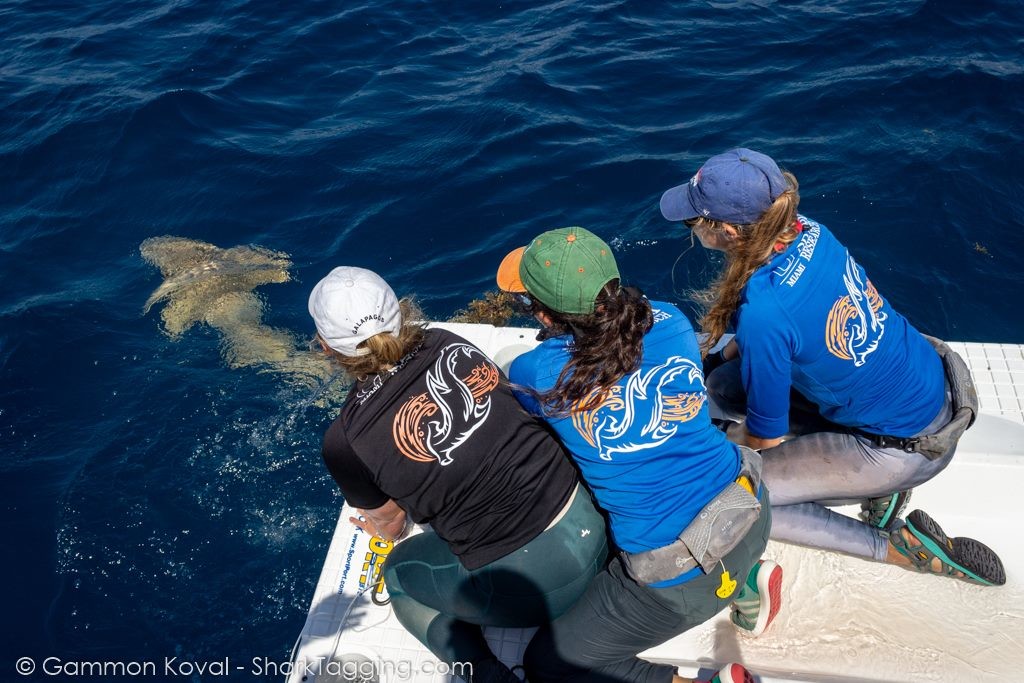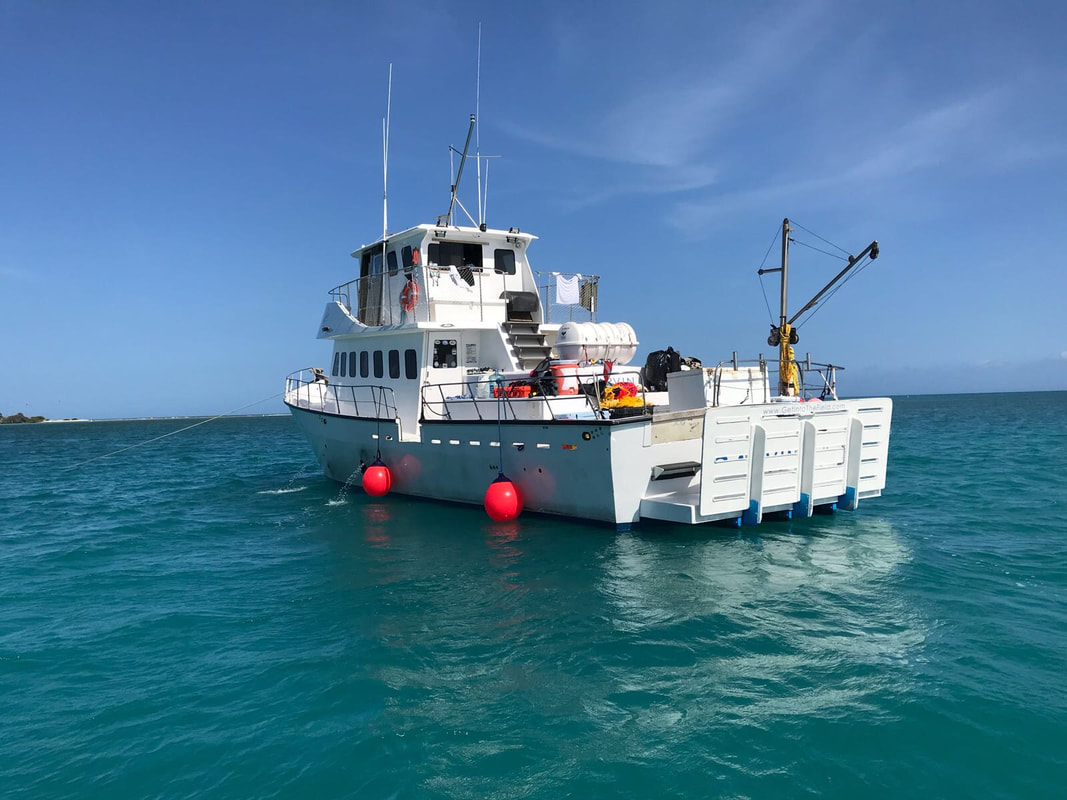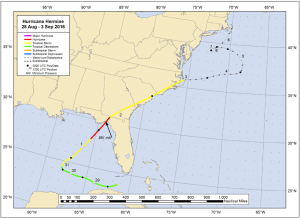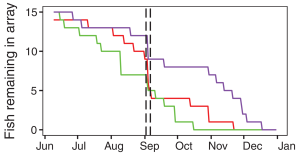The Summer of Sharks
As I have written here before, I love sharks.
Every size and type of shark intrigues me and the more I encounter these amazing creatures, the more I want to learn. In fact, one of my goals this summer has been to spend at least 30 days aboard research vessels catching, tagging, collecting scientific data on and releasing sharks. I am happy to report that I expect to accomplish or exceed my goal and that my summer of sharks has been incredible.
Thankfully I live in a region of the world that allows me to study these amazing creatures and that’s particularly the case because of my college. I’m fortunate to attend one of the leading marine science schools in the world, the University of Miami’s Rosenstiel School of Marine and Atmospheric Science, and am deeply honored to be part of the small team that makes up Dr. Neil Hammerschlag’s renowned Shark Research and Conversation (SRC) Lab.
From nurse sharks, like the one above, and great hammerheads to black tips and tiger sharks to just about everything in between that you can imagine, we see them all in our work with SRC. In my own work this summer, over the course of almost 30 days in the field on board research vessels, I have been fortunate to have helped catch, study and tag at least 10 different species of sharks through my internship with SRC and as a student of the Field School’s Elasmobranch Course.
My summer began with a week-long trip out of Key West where we traveled to the Dry Tortugas and lived aboard the Field School’s Research Vessel Garvin. I was honored to have been selected for the trip and work with the incredible people from the Field School, as well as members of the SRC team so as to study the Tortuga’s Gulf of Mexico shark population.
During our week offshore, not only were we able to dive some exquisite sunken wrecks covered in all sorts of colorful tropical fish species and sea turtles, but we also caught, tagged and collected biological samples on 27 different sharks (8 species total) before gently releasing them back into the wild. The SRC and Field School teams also spent another two weeks in the Dry Tortugas where they caught and released 51 more sharks for a total of 78 over the three weeks of research we performed there in May and June.
I then spent another week on the RV Garvin with the Field School staff as we sailed the waters off the coast of Miami out in the Atlantic Ocean. Each day we performed science on the sharks that we caught and released and learned about their role and importance within our natural environment as an apex species. During that week we caught and released some very cool species including bonnethead sharks, blacknose sharks and even a smalltooth sawfish that we quickly released back into the water before reporting our sighting to the U.S. Fish and Wildlife Service as is required due to their highly endangered status. Protecting important species like the sawfish or the great hammerhead is critical to every element of our environment and the news out of Washington, which you can read here, that the Trump Administration wants to reduce those protections is deeply disappointing.
In the event that you are curious about such scientific work, what we do when catching and releasing sharks, I’ve included a few pictures within this blog from this summer. When ‘working up a shark’, as we call it, we carefully and gently secure most of the sharks onto a special platform off the back of the boat (the stern) and in the short time it’s there we quickly collect all sorts of data including measurements, fin clips, muscle biopsies, blood samples and then we tag each shark using either a NOAA tag, acoustic tag or satellite tag.
Some species, such as the majestic and protected Great Hammerhead, never leave the water (I’ve included some pictures of our work this summer on these incredible animals as well) and in every single case great care is taken to respect the animal in every way and to release them as quickly as possible back into their natural environment. The process is orchestrated like a symphony, a shark science symphony I would could call it, as each member of the team has a specific role for that day’s trip, has gone through extensive training and is supervised at all times by highly knowledgeable leaders with years of hands on field experience.
I’ve also, of course, been aboard many trips throughout my first two semesters that SRC has conducted and it was on one of those trips that I have one of my fondest memories of my first year. It was the first time that I had ever been offshore with the team, meaning we were in 100 feet deeper water than usual and had to add extension lines to our gear. It was an amazing day where we caught two bull sharks, two great hammerheads, and one tiger shark. I should mention that it was actually my first time ever seeing a great hammerhead and a tiger shark in person. It was such an exciting (and exhausting day) that I fell asleep as I was telling my family about our adventures and good fortune!
As my Summer of Sharks continues, I want to remind everyone that Dr. Hammerschlag and the University of Miami’s Shark Research & Conservation Lab will be featured in three different Shark Week episodes this summer! Be sure to check out “Monster Tag” Monday July 23rd at 8:00pm, “Shark Tank Meets Shark Week”Wednesday July 25th at 9:00 pm, and “Tiger Shark Invasion” Thursday July 26th at 10:00 pm!
My friends at Field School will also be featured in “Alien Sharks: Greatest Hits” Sunday July 22nd at 7:00 pm and “SharkCam Stakeout” Wednesday July 25th at 10:00 pm.
You can catch these shows on The Discovery Channel so tune in or set your DVR to record all of the fun and excitement.
Thank you to everyone in SRC and at the Field School for making this summer so absolutely amazing and one full of sharks!
I want to especially send a shout out to Dr. Hammerschlag, Steve, Abby, Shannon, and Trish from SRC for supporting, teaching and encouraging me. I might be the youngest person in our Lab but no one is more honored to work with you and everyone at SRC. Thank you SRC.
I’d also like to very much thank Julia, Catherine, Christian, Jake, and Nick from Field School for embracing and inspiring me. My experiences offshore and on-board with you and the others on each of our trips this summer was life changing (so much so that I am now studying for my Captain’s license). Thank you Field School.
If you love sharks, or are just curious to learn more about these wondrous creatures, I have GREAT news for you. You, too, can go shark tagging or attend other educational trips with us. To learn more about Shark Research and Conservation, please click here or to learn more about Field School, please click here. I hope you will consider joining us on what I promise will be a once in a lifetime experience that you will never forget.
Okay, enough about my summer “vacation,” my summer of sharks. I am off on another two trips with the SRC team this Saturday and Sunday and hope you will tune in and learn more about sharks on TV this week or join us out on the water soon. Fins up and enjoy the rest of your summer!
